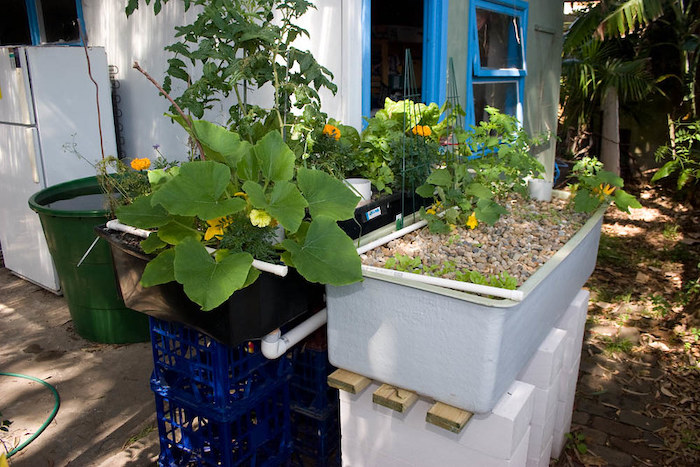
Creating a Cost-Effective Aquaponic Garden for Year-Round Growth
Aquaponics, the symbiotic cultivation of fish and plants, offers a sustainable and efficient method for food production. This article explores the design and implementation of a cost-effective aquaponic system capable of year-round growth, minimizing initial investment and ongoing operational expenses. By focusing on readily available materials and energy-efficient practices, even budget-conscious individuals can enjoy the benefits of this innovative gardening technique.
System Design: Choosing the Right Approach
The foundation of any successful aquaponic system lies in its design. Several approaches exist, each with its own advantages and disadvantages regarding cost and complexity. For a cost-effective, year-round operation, a media-bed system offers a good balance of simplicity and productivity.
Media Bed System: A Cost-Effective Choice
Media bed systems utilize a growing bed filled with an inert growing medium, such as gravel, clay pebbles, or lava rock. Water, enriched with fish waste nutrients, is periodically circulated through this medium, providing the plants with essential nutrients. This approach is relatively simple to construct and maintain, making it ideal for budget-conscious aquaponic enthusiasts. The cost of the growing media can be minimized by sourcing materials locally or using recycled aggregates.
Choosing the Right Fish Species
Fish selection significantly impacts the system's overall cost and efficiency. Hardy, fast-growing species are preferable, minimizing feed costs and maximizing nutrient production. Tilapia and certain types of catfish are popular choices due to their tolerance to a range of water parameters and their relatively fast growth rates. Researching locally available, inexpensive fish species is crucial for cost optimization.
Optimizing System Size and Capacity
The size of the system should align with available space and resource constraints. A smaller system requires less initial investment but may limit production capacity. Careful planning is crucial to ensure a balance between initial cost and long-term yields. Starting with a smaller system and gradually expanding is a sensible strategy, allowing for refinement and optimization based on initial experiences.
Material Sourcing and Cost Reduction Strategies
Minimizing material costs is paramount when constructing a budget-friendly aquaponic system. Several strategies can significantly reduce the overall investment.
Repurposing and Recycling Materials
Repurposing readily available materials can drastically reduce expenses. Old plastic containers, IBC totes, or even repurposed bathtubs can serve as effective fish tanks or grow beds. Similarly, recycled gravel, lava rocks, or even clean construction debris can be used as growing media. This approach not only reduces costs but also promotes sustainable practices.
Sourcing Materials Locally
Locally sourced materials typically cost less than those purchased from large retailers. Contacting local nurseries, construction sites, or even landscaping companies may uncover affordable alternatives for growing media, containers, and other components. This also reduces transportation costs and environmental impact.
DIY Construction and Fabrication
Building components yourself can significantly lower expenses compared to purchasing pre-fabricated systems. While some basic DIY skills are required, constructing simple components like grow beds and water delivery systems is achievable for many individuals. Online resources and tutorials offer extensive guidance for various DIY aquaponic system designs.
Year-Round Growth Strategies
Maintaining optimal conditions for year-round growth requires careful attention to several factors.
Temperature Regulation
Maintaining a consistent water temperature is crucial for both fish and plant health. In colder climates, insulation is essential to prevent temperature fluctuations. Simple measures like using insulated containers, adding a layer of foam, or even placing the system in a greenhouse or sunroom can significantly improve temperature stability. A cost-effective heating solution could be a simple aquarium heater sized appropriately for your system's volume.
Lighting Considerations
Adequate lighting is vital, particularly during shorter days in winter months. While sunlight is ideal, supplemental lighting, especially energy-efficient LED grow lights, can ensure sufficient light intensity for plant growth. Using timers to regulate lighting hours optimizes energy consumption and plant growth cycles.
Water Quality Monitoring and Maintenance
Regular monitoring of water parameters (pH, ammonia, nitrite, nitrate) is critical for maintaining a healthy environment for both fish and plants. While sophisticated monitoring equipment exists, cost-effective alternatives include simple test kits that allow for regular checks. Understanding the basic principles of aquaponic water chemistry and promptly addressing any imbalances is crucial for preventing problems.
Long-Term Cost Savings and Sustainability
While the initial investment may seem significant, a well-designed aquaponic system offers considerable long-term cost savings and environmental benefits. The system's self-sustaining nature reduces reliance on external inputs, resulting in reduced expenditure on fertilizers, pesticides, and other gardening supplies. Moreover, the production of fresh, nutritious food at home contributes to food security and reduces reliance on commercially produced food, mitigating transportation costs and carbon footprints.
Reduced Food Costs
The continuous harvest of fresh produce significantly reduces grocery bills over time. The combination of fish and plants provides a diverse and nutritious diet, reducing the need to purchase multiple food items.
Reduced Environmental Impact
Aquaponics is a highly sustainable approach to food production. The closed-loop system minimizes water usage, eliminates the need for synthetic fertilizers and pesticides, and reduces the overall environmental footprint associated with traditional agriculture.
Increased Food Security
By producing food at home, individuals gain greater control over their food supply. This is especially valuable during times of economic uncertainty or disruptions to supply chains.
In conclusion, creating a cost-effective aquaponic garden for year-round growth is achievable through careful planning, resourceful material sourcing, and a commitment to sustainable practices. By embracing DIY construction, repurposing readily available materials, and implementing energy-efficient strategies, individuals can enjoy the rewards of this innovative gardening technique, reaping the benefits of fresh, nutritious food while minimizing environmental impact and long-term costs.